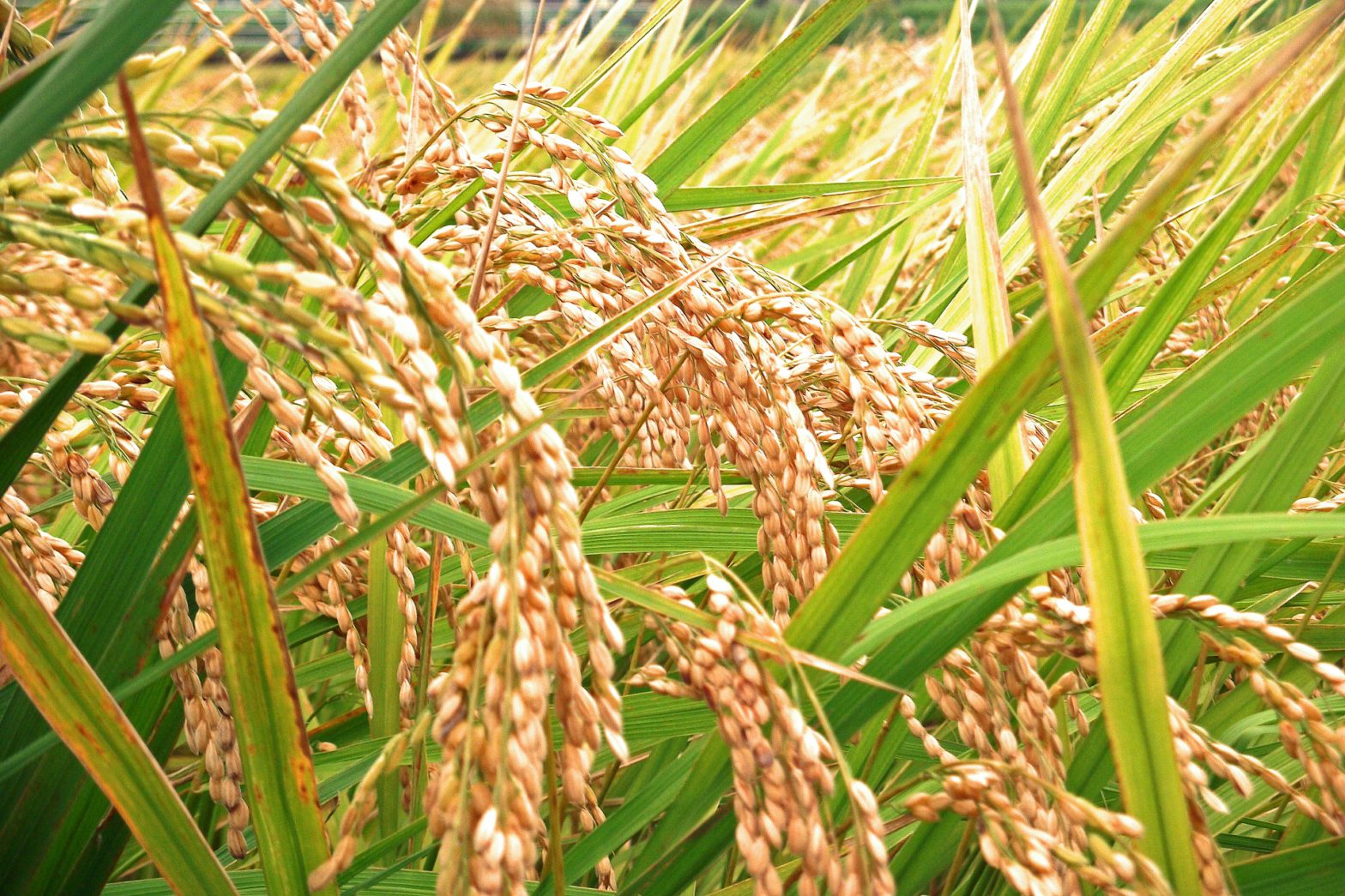Generally speaking, there are two types of rice: African rice and Asian rice. Asian rice includes three subspecies: Japonica, Indica, and Javanica (now known as tropical japonica) rice. Sake specific rice belongs to the Japonica rice group. Japonica rice has a shorter, stickier grain than Indica rice but not all Japonica rice is ideal for sake production.
Many sake breweries use table rice for sake production, but sake specific rice is more suitable for making sake. That is why sake specific rice is used especially for premium sake production.
#1. Grain size
Sake rice has a larger grain than table rice. The premium sake always uses polished rice, so a larger grain leaves a larger inner part remaining when a significant percentage of rice is polished away. Because of the size, sake rice is heavier than table rice. Using the sake industry senryūjū1 measurement unit, sake rice has a senryūjū of around 25-30g.
#2. Larger shinpaku
Shinpaku (center white) is the opaque part of the rice situated at the center of the grain. It consists of starch so the structure is very fragile and water absorbent. These characteristics are essential for both saccharification and koji growth but this fragility creates a crumbling texture when cooked, making it unsuitable for eating. For this reason, table rice has negligible or no shinpaku.

#3. Lower protein and lipids
Lipids and proteins which are concentrated in the outer part of rice provide umami (savory taste) when eaten but bring undesirable flavors in sake. If sake carries too much umami, the flavor is too strong. During the sake production process, the rice protein is transformed to amino acid which is preferred for taste, so sake brewers tend to choose rice with lower protein and lipids as well as polishing the outer part of the rice to reduce the amount of umami in the end product.
#4. Resistant to cracking
Although water absorption is important for sake production, rice that cracks during the washing or soaking process absorbs too much, and unpredictable amount of, water. The absorption ratio is extremely important for brewers, so they tend to use rice that is resistant to cracking.

